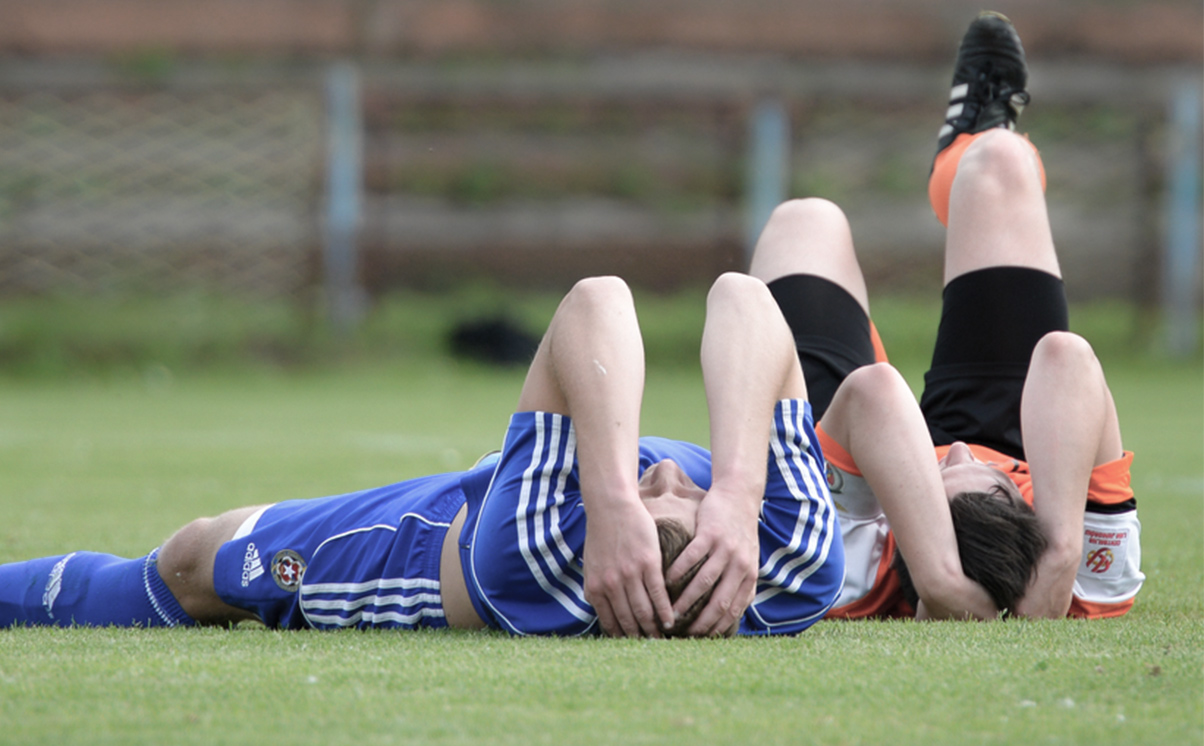Barrington Atkins considers the consequences of serious injury for players at all levels of the game and looks at a recent case in which a player sued for loss of earnings due to an injury sustained as a result of the recklessness of an opponent.
Saturday 9 November 2019 is a day many football fans will not forget. Supporters of Everton and Tottenham will remember it as the day they saw a footballer sustain a sickening injury that will see him out of action for the foreseeable future.
André Gomes sustained a badly broken ankle in a clash on the ball with Spurs striker Son Heung-min. As the player was stretchered off the pitch, the distress etched on the faces of his fellow players suggested the prognosis was not good.
Thankfully for Gomes and Everton, however, the Portuguese midfielder is expected to make a full recovery and his injury is not thought to be career-ending.
As the media focused on the incident and whether or not the tackle deserved a red card, what fans won’t have been aware of was that on that day a staggering 162 Premier League footballers were out of action and undergoing treatment for injuries.
Football injuries
The majority were nursing ankle sprains, torn ligaments or hamstring issues, but some were more serious. Newcastle’s Jamaal Lascelles, for example, sustained a knee injury on the same day that will see him missing from the Magpie’s line-up until at least February. Bournemouth’s Charlie Daniels was even more unfortunate and will sit out the rest of the season with a dislocated kneecap.
Injuries are, of course, a career hazard, with footballers at all levels likely to have at least one of the more common injuries at some point in their career. These include hamstring or knee sprains, ankle injuries and at the worst end of the spectrum, cruciate ligament problems.
In an average season, a team with a squad of 25 players can expect at least seven hamstring injuries, and almost half of its squad (40-45 per cent) will have some form of leg injury. Other common ailments to befall players are Achilles tendinopathy (an aggravation of the ankle), torn meniscus (which affects the cartilage in the kneecap), abductor and groin strains, and concussion from head injuries. Thankfully, anterior cruciate ligament tears occur relatively infrequently (25% of injuries), as these are the most common season-ending injuries.
The cost of injuries to football clubs
The cost to clubs can be significant. Research from insurance brokers Marsh found that the top-flight clubs spent on average £26.3m on injured players in the 2018-19 season. At least teams at the leading clubs have the treatment and rehabilitation facilities necessary to recuperate their stars. Certainly, the smaller teams don’t have anywhere near as good treatment facilities as the likes of Manchester City, for example, who send their injured stars to a hospital in Barcelona (the same unit that treats Messrs Messi and Suarez).
At the other end of the English League spectrum, semi-professional players are not so fortunate, and many don’t have insurance to cover the expenses and loss of earnings they incur if they get injured. As a result, when they are injured long term, it can affect their livelihood and impact their mental health.
In some situations, legal action is possible. In a recent landmark case, Welsh v Ossett Town, Manchester County Court ordered Northern Premier League team Ossett Town to pay £19,000 in damages to a semi-pro player, Reece Welsh, for loss of earnings after deciding the club’s player, Sam Akeroyd, was guilty of a reckless challenge against him. The court also ordered Ossett Town to pay costs of £115,000 to cover Welsh’s legal fees.
The club had insurance through their league membership, but not enough to cover such a hefty sum and may be forced to sell off their ground to cover the bill.
Barrington Atkins, a specialist sports injury lawyer, says about the case: “The case shows that players can take action if they experience financial loss as a result of an injury that is not their fault. Players often worry about making a claim against an opponent or a club when they sustain a career-affecting injury. While the claim might nominally be made against another player or a club, the reality is that players and clubs are insured and it is the insurer that runs the defence of any such claims and ultimately pays the compensation. Similarly, in cases where the claim is brought due to the failure of a doctor to diagnose an injury or adequately treat an injury, the doctor will have insurance in place that would meet the claim.”
You can find further information regarding our expertise, experience and team on our Football Injuries, Sports Injury and Clinical Negligence pages.
If you require assistance from our team, please contact us or alternatively request a call back from one of our lawyers by submitting this form.
Subscribe – In order to receive our news straight to your inbox, subscribe here. Our newsletters are sent no more than once a month.





